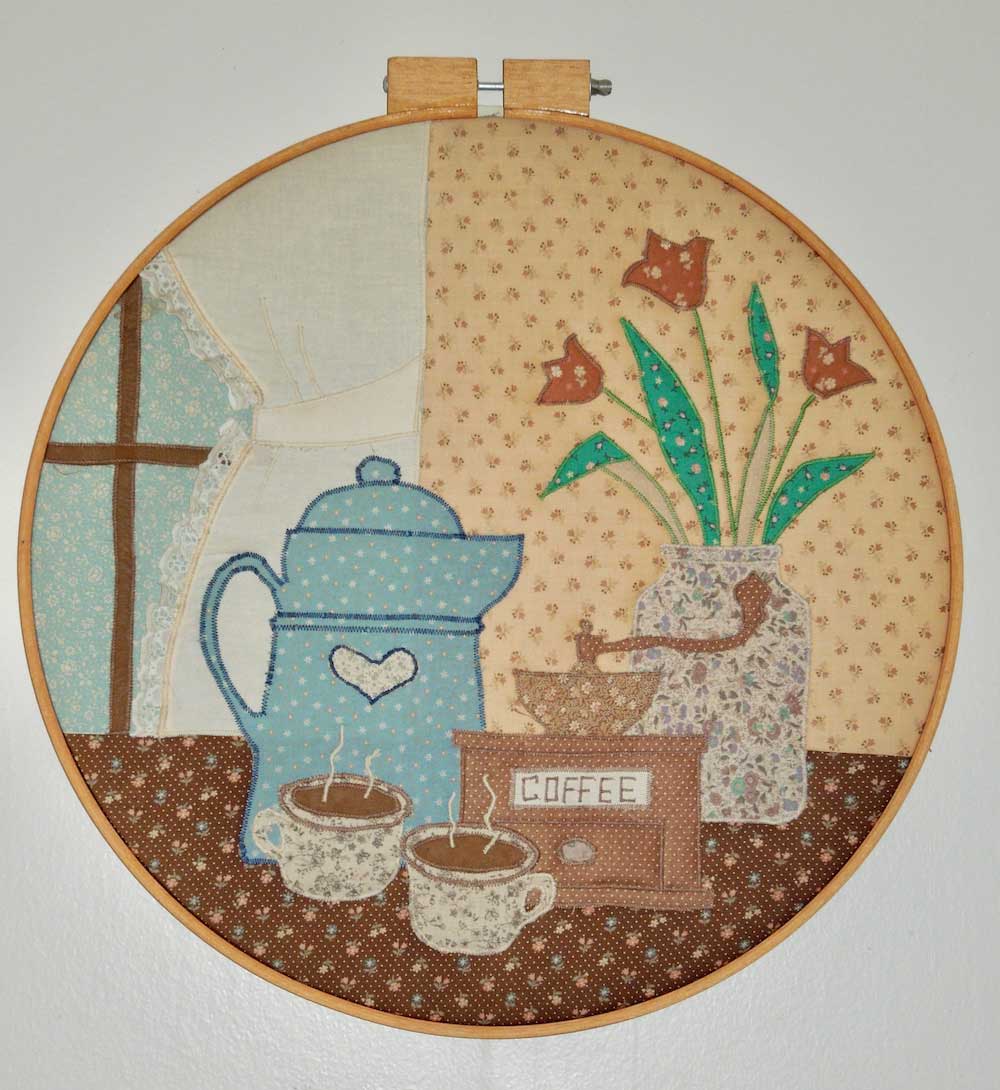May 2025
Good Eye
Quilt art by the piece
by Peggy Whiteneck
Most of us are familiar with quilted bed coverings, which have a history going back centuries. We’re also familiar with the prices the best of antique quilts can command today. Quilts can be found in many classic forms and colors in specially tailored alterations of these forms so that no two quilts in the same design ever look the same. Many of the older quilts contain arcane references to family histories or, in the case of Underground Railroad quilts that could be hanged outside, hints on ways for runaway slaves to make their way to freedom. For more information on bed-size quilts, see Sandra Starley’s column, “Covering Quilts,” published regularly here in Discover Vintage America.
My focus in this article is on smaller wall cloth and wooden building hangings that model quilts.
Small Cloth Quilted Wall Hangings
Antique bed-size quilts are sometimes displayed as wall hangings. Small pieces of quilting or embroidery, sometimes framed in embroidery hoops, appear to be a fairly modern take on the ancient art of quilting. At least, I couldn’t find any references to these smaller decorative accents dating before the mid-to-late 20th century. These will often be framed by embroidery hoops that can also be used to create neat squares that can be sewn together for larger quilts. The hoops used for wall hangings are often trimmed with lace or other fabric. Seen here is an unusually large quilted hoop that hangs in my kitchen. This one is double-sewn around the edges of the pieces used to make the picture.
Another example I have of a quilted wall hanging is a square piece (18”) signed Cheri Tamm Raymond, Newport, NH, 1983, making it more than 40 years old. In my experience, though, these small wall hangings are usually not signed.
The oldest small cloth wall hangings, some of them genuine antiques, may result from efforts to preserve sections of larger quilts too damaged to save. Find antique examples of small wall hangings on the Rocky Mountain Quilts website: rockymountainquilts.com.
Barn Quilts
Because wooden evocations of quilting are designed to accent barns and other outbuildings, they are larger than internal wall hangings. They are square, 4-feet-by-4-feet or 8 feet-by-8 feet and brightly colored, which makes them stand out against the uniformly and often sometimes drably painted buildings that they decorate.
This art form dates from about 300 years ago. It’s believed that they originated with immigrants settling in Pennsylvania. Those most commonly seen today have their origin in 2001 from Donna Sue Groves, who made one for her parents’ barn and sparked the modern craze for a reissue of this art.
The oldest of these had the same kind of function as cloth quilts, and they often repeated the artistic motifs of the cloth ones. Sometimes, these contained important messages, such as identifying farm ownership for travelers. They may have served as good luck charms to attract good luck and ward off the bad. It has also been suggested that the barn quilts, much as the cloth quilts that hung on porch rails outside houses, were signals to those fleeing slavery, telling them where to find shelter and food.

This large (21 in. diameter) hooped quilted wall piece was sewn with a tight zigzag stitch. The picture framed by the hoop is unusually detailed, in both the cloth pieced and the sewing (The lace on the edge of the curtain stands out three-dimensionally from the rest of the work). The hoop that frames the piece is 21” in diameter and would have been typical of the hoop size used in sewing pieces for a larger quilt. (Image courtesy of the author)
It is unlikely that many genuinely antique barn quilts survive today, as they would have been subjected to the same erosive weather factors as the barns on which they were hung. Paint fades and wood warps. Consequently, most of the barn quilts we’d see today are those that resulted from the interest reignited by Donna Groves in the 2000s – sort of the barn quilt equivalent of antique styles in modern-made furniture.
There are whole barn quilt trails in many states, including Ohio, which has a trail with more than 250 barn quilts! You can find these trails in states throughout the country, as listed on the Primitive Star Quilt Shop’s website: allpeoplequilt.com.
Peggy Whiteneck is a writer, collector, and dealer living in East Randolph, VT. If you would like to suggest a subject that she can address in her column, email her at allwritealready2000@gmail.com.

